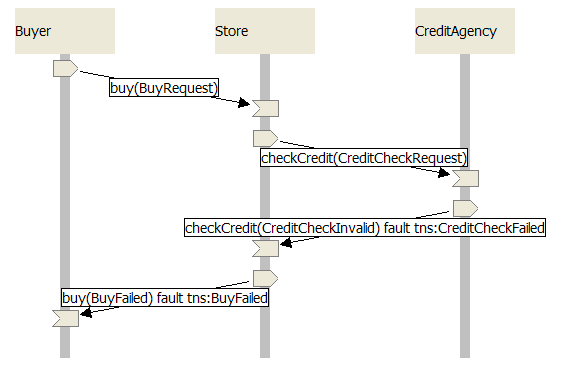Define a set of scenarios to represent each path through the business process, spanning the relevant participants that may be involved.
At this stage, each interaction may be specified just as a line between the sending and receiving participants, possibly including some descriptive text. Some understanding of the message type that will be required should be noted.
In the purchasing example, two scenarios will be created.


Where message types are already available, whether as schema or listed in a skeleton architectural model (i.e. CDL), then the message types should be set on each appropriate interaction link.
In the purchasing example message types include:
BuyRequest
CreditCheckRequest
CreditCheckResponse
BuyResponse
Where new message types are required, a reference to the new types should be recorded (i.e. in the CDL architectural model's base types), and then referenced by the appropriate interaction links.
Details
Define a scenario per use case, potentially involving different subsets of the participants. Scenario interactions will need to be associated with example messages. Some of the messages may have previously been created as part of other scenarios, so they can be shared.
Repo: Store each scenario separately within the repository. Collaborative comment/approval. Access to existing message schema definitions and examples. Need to categorize example messages so they can easily be searched, possibly enabling search based on content? Or based on instance of a particular schema type? Define dependencies between scenario and example messages, and between the example messages and their schema (if available). Also define dependency between scenario and the collaboration model they relate to.
Input: Use cases, possible skeletons defined using UML sequence models. Available message schemas and examples.
Output: A set of distinct scenarios.
Comments